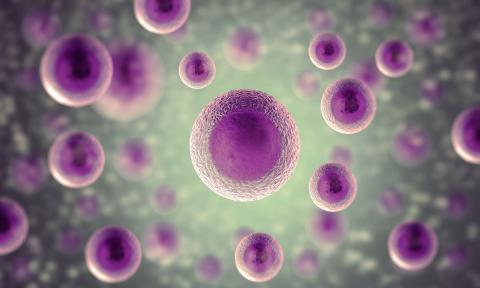Stepping Up Wound Care: Advanced Wound Care Products
July 31, 2022
Introduction
Wound repair and regeneration comprise a complex process of biological and molecular events that consists of cell migration and proliferation, along with extracellular matrix deposition and remodeling.1 Unfortunately, not all wounds progress through healing easily. Certain pathophysiologic and metabolic conditions can alter the course of healing and impair or delay it, resulting in chronic, nonhealing wounds.2 The costs to treat nonhealing wounds can be high, and the patient’s quality of life can be impacted by any related loss of mobility or productivity. For these reasons, advanced wound care modalities and products may be introduced to help address underlying factors that impair the healing process.
The Use of Advanced Wound Care Products
If a patient’s wound fails to progress through healing within 6 weeks, clinicians must reassess the treatment plan and address the factors contributing to stalled healing or worsening of the wound. Potential complications may include the presence of biofilm or infection, comorbidities, and nonadherence to treatment recommendations, among others. Once clinicians have reassessed the care plan, the team may identify advanced wound care products that can address wound conditions and support better healing outcomes. Among the advanced care options are1:
Cellular and tissue-based therapies (CTPs)
This type of advanced therapy may use cells, including those listed here.3 The cells may induce immunomodulation in the wound bed and facilitate healing by resolving inflammation, thus making the use of these products an attractive treatment option for chronic and complex wounds.4
- Stem cells, including bone marrow stem cells, keratinocytes, and fibroblasts
- Scaffolds, including carrier systems
- Skin substitutes
- Tissue-based therapies, including autologous blood derivatives for wound care and advanced cell therapy
- Epidermal substitutes, dermal substitutes, and dermoepidermal substitutes
- Melanocytes, vessels, and genetic manipulation
Bioengineered skin or dermal substitutes
Tissue engineering now includes biosynthetic and cell-based skin replacements, including autologous keratinocyte grafts, culture allogeneic keratinocyte grafts, autologous or allogeneic composites, acellular collagen matrices, and cellular matrices.1
How much do you know about the continuum of wound care? Take our 10-question quiz to find out! Click here.
Antimicrobial dressings
Many dressings have been developed for chronic and nonhealing wounds, including some dressings that include antimicrobial agents such as silver, polyhydrated ionogens, polyhexamethylene biguanide, honey, povidone-iodine, and chlorhexidine gluconate.5 These dressings can manage infection and bioburden and inhibit protease activity. 6
Human fibroblast-derived dermal substitutes
These products are composed of fibroblasts, extracellular matrix, and a bioabsorbable scaffold produced by culturing human dermal cells. These products are contraindicated for use in ulcers that have signs of clinical infection or sinus tracts.1
Negative pressure wound therapy
Negative pressure wound therapy is also called vacuum-assisted closure. It is a common treatment for complex wounds, especially those with high exudate levels. It can decrease the number of dressing changes, reduce the time between debridement procedures, and reduce costs associated with prolonged hospital stays.1 Furthermore, negative pressure wound therapy can be an effective treatment option for many types of wounds with different causes.7 It works by applying subatmospheric pressure to the surface of the wound and collecting exudate by using a suction pump and drainage collection system.8
Hyperbaric oxygen therapy
Hyperbaric oxygen is a treatment option for complicated or recalcitrant ulcers. The applied oxygen can stimulate angiogenesis, enhance fibroblast and leukocyte function, and normalize cutaneous microvascular reflexes.1
Electrical stimulation
Human skin has an electrical potential, and when damage occurs, an additional electrical current is generated to facilitate healing. Research has found that adding an external electrical current can result in enhanced immunity, a reduction in infection, and improved healing.9 These are the primary options for advanced wound care. However, other options may be considered, such as extracorporeal shock wave therapy, growth factor therapy, protease inhibitors, connexin inhibitors, platelet-rich plasma, and monoclonal antibody therapy.9
Conclusion
Nonhealing wounds present a significant challenge in clinical practice. Understanding the biological processes occurring in the wound bed can help clinicians optimize these conditions and select compatible advanced therapies. These therapies may be the key to overcoming challenges in nonhealing wounds.

References
- Wu SC, Marston W, Armstrong DG. Wound care: the role of advanced would healing technologies. J Vasc Surg. 2010;52(3 suppl):59S-66S.
- Mustoe TA, O’Shaughnessy K, Kloeters O. Chronic wound pathogenesis and current treatment strategies: a unifying hypothesis. Plast Reconstr Surg. 2006;117(7 suppl):35S-41S.
- Armstrong DG, Bauer K, Bohn G, et al. Principles of best diagnostic practice in tissue repair and wound healing: an expert consensus. Diagnostics (Basel). 2020;11(1):50. doi:10.3390/diagnostics11010050
- Nuschke A. Activity of mesenchymal stem cells in therapies for chronic skin wound healing. Organogenesis. 2014;10(1):29-37.
- Mana TSC, Donskey C, Carty N, Perry L, Leaper D, Edmiston CD Jr. Preliminary analysis of the antimicrobial activity of a postoperative wound dressing containing chlorhexidine gluconate against methicillin-resistant Staphylococcus aureus in an in vivo porcine incision wound model. Am J Infect Control. 2019;47(9):1048-1052.
- Chamanga ET. Clinical management of non-healing wounds. Nurs Stand. 2017;32(29):48-62.
- Apelqvist J, Willy C, Fagerdahl A, et al. EWMA document: negative pressure wound therapy. J Wound Care. 2017;26(suppl 3):S1-S154.
- El-Sabbagh AH. Negative pressure wound therapy: an update. Chin J Traumatol. 2017;20(2):103-107.
- Ahangar P, Woodward M, Cowin AJ. Advanced wound therapies. Wound Pract Res. 2018;26(2):58-68.
The views and opinions expressed in this blog are solely those of the author, and do not represent the views of WoundSource, HMP Global, its affiliates, or subsidiary companies.
Have a product to submit?
Be included in the most comprehensive wound care products directory
and online database.
Learn More












Follow WoundSource
Tweets by WoundSource